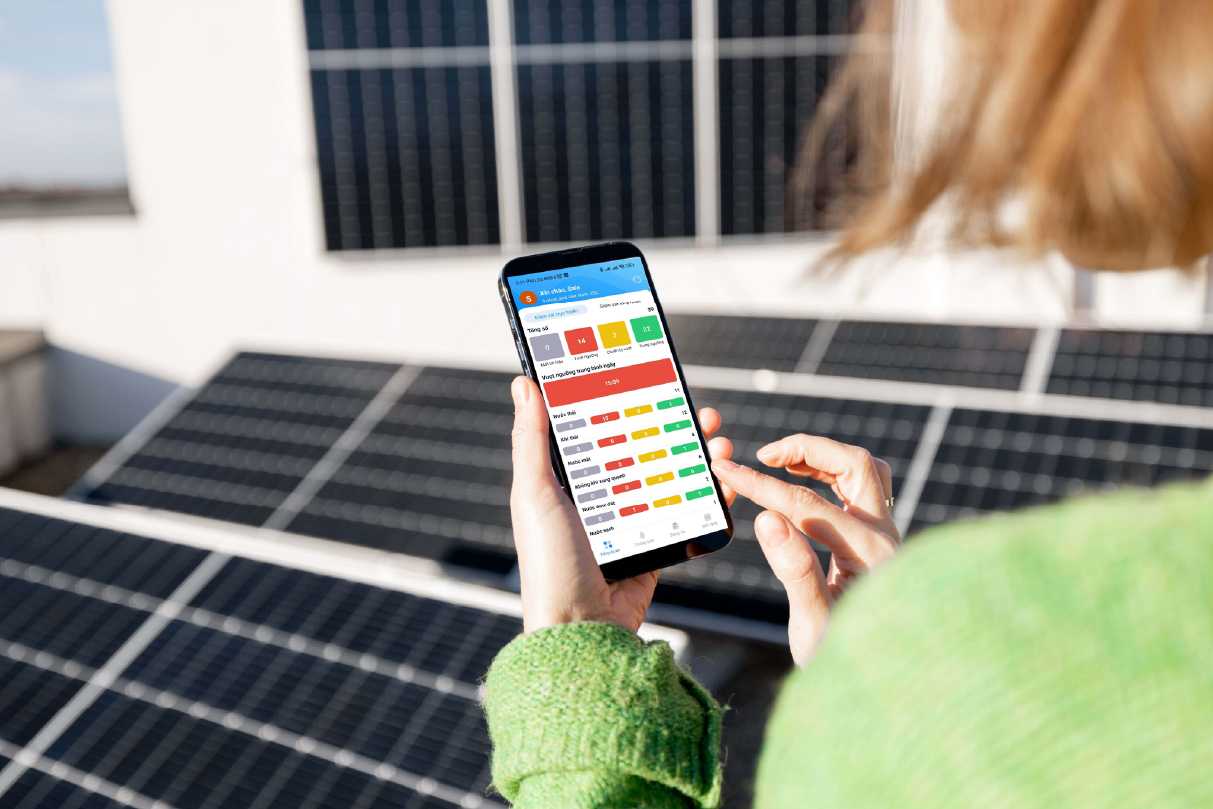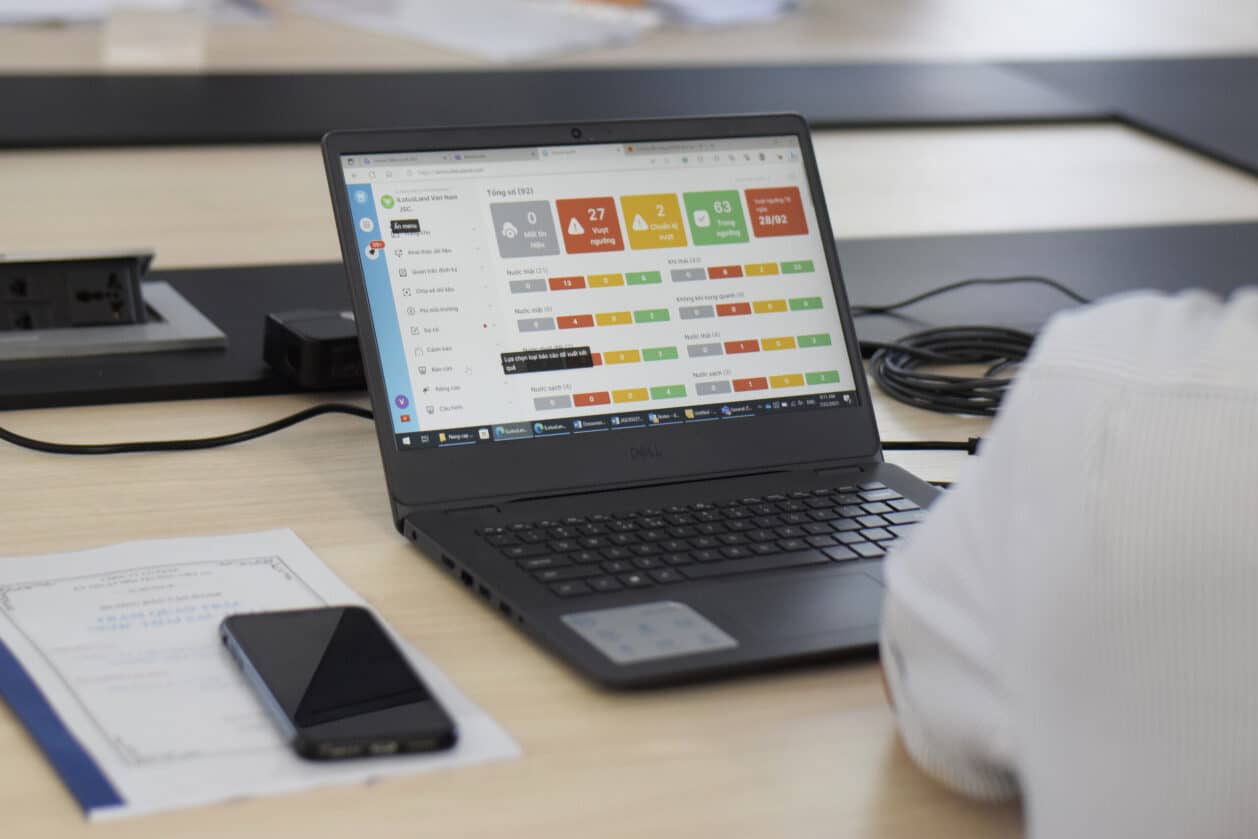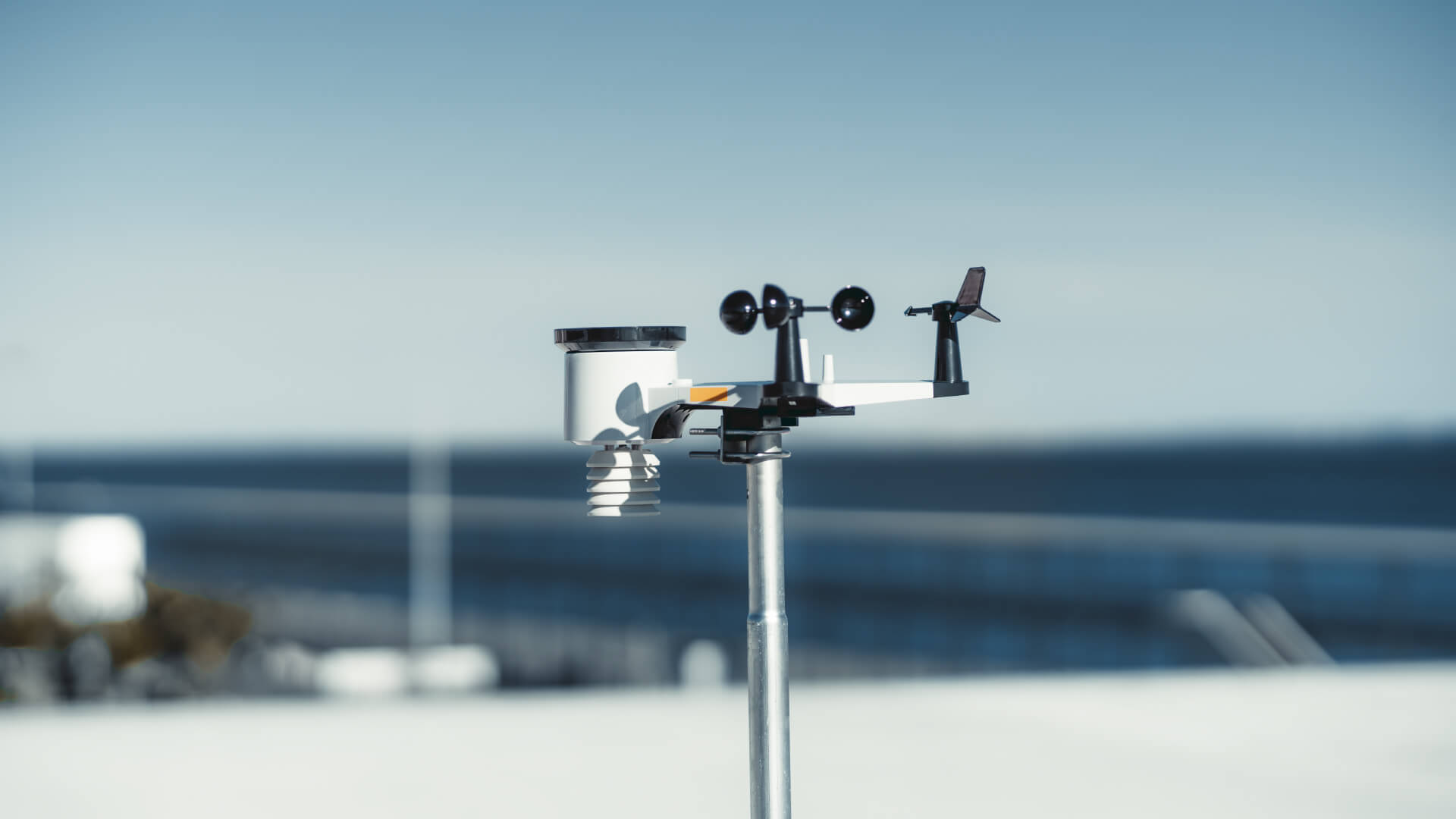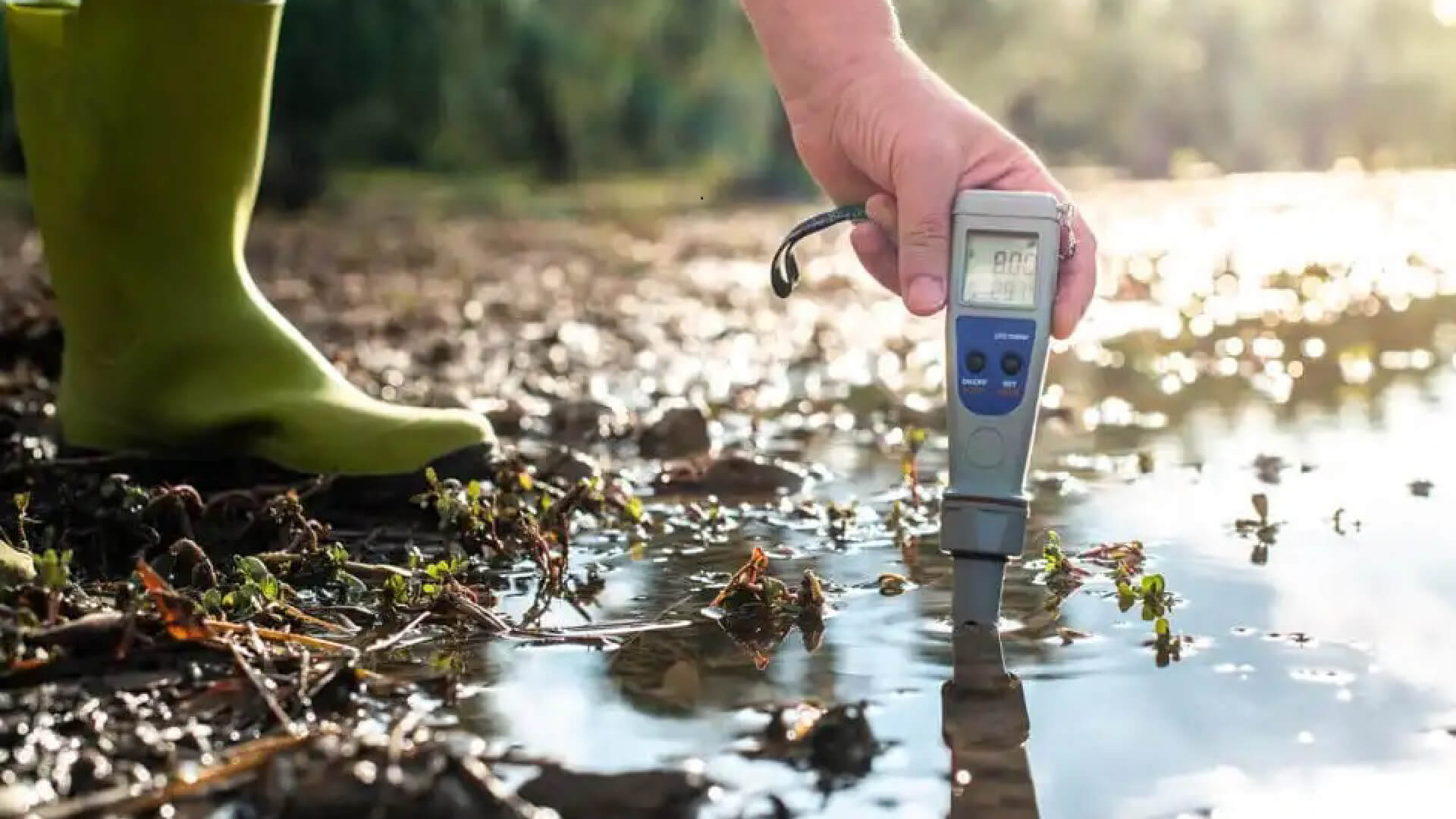Environmental Monitoring is the process of using tools and measuring devices to collect data on environmental factors such as air, water, soil, waste, and noise. There are seven main types of environmental monitoring: air, soil, water, waste, noise, spectral, and atmospheric monitoring; all of them are crucial for providing key information about the environment. The primary purpose of environmental monitoring is to assess and track changes in the environment and the impact of activities such as production, construction, and transportation on the components of the environment.
Through environmental monitoring, one can measure the quality of air, water, and soil, assess pollution levels, evaluate the impact of various types of waste, and monitor factors such as noise levels. These data are crucial for understanding the environmental condition, making decisions about environmental management, and developing measures to protect the environment and human health.

What Is Environmental Monitoring?
Environmental Monitoring is Environmental Monitoringdefined in Section 25, Article 3 of the 2020 Environmental Protection Law Environmental Protection 2020 definite Environmental Monitoring as the continuous, periodic, and systematic observation of the components and factors affecting the environment, including waste. The purpose is to provide information for assessing the current state, changes in environmental quality, and adverse impacts on the environment.
Environmental monitoring helps us monitor changes in the environment. Helps to avoid the risks of pollution or environmental degradation. As well as providing timely measures for areas with potential or polluted environmental risks. At the same time, storing information during monitoring to provide a basis for data for future activities.
Why Is Environmental Monitoring Important?
The IPCC Sixth Assessment Synthesis Report (AR6 SYR) states that many countries are not adequately prepared to face the impacts of climate change, making environmental monitoring more crucial than ever. This is a key factor in our understanding of the complexity of the environment. It helps identify risks and harmful impacts that activities from organizations and individuals may pose to the environment, particularly human health. By monitoring the environment, we can improve the quality of life and ensure the safety of society.
Environmental Monitoring Applications:
- Water supplies
- Managing hazardous/radioactive waste
- Understanding pollution sources
- Protection of natural resources
- Weather forecasting
- Economic development
- Protecting endangered species
- Understanding global climate change
These applications are responsible for ensuring that we have comprehensive and accurate information about the environment, aiding in the efficient management and protection of environmental resources.
Types Of Environmental Monitoring
If you are an organization or an individual engaged in business activities that generate waste into the environment, it is essential to pay attention to and comply with the latest environmental regulations, such as Circular 02/2022/TT-BTNMT under the newest 2022 Environmental Protection Law. This is crucial for assessing the potential impact your business may have on the environment. Depending on the industry in which you operate, there will be corresponding regulations that you need to adhere to.
Read more: Circular 02/2022/TT-MONRE Latest Environmental Protection Law 2022
Air/Atmospheric Monitoring
Air quality monitoring is the process of measuring and recording the components and quality of air in the environment. This monitoring typically involves measuring the concentrations of pollutants such as greenhouse gases, toxic gases, particulate matter, ozone, and other substances that may impact air quality.
The objective of air quality monitoring is to provide accurate and continuous information about the level of air pollution for the management and protection of public health and the natural environment. Air quality monitoring devices typically include sensors and complex measurement systems to collect precise data on air quality at various locations.
Air pollutants are harmful to the environment and human health. Some air pollutants are also known to degrade infrastructure, including cultural structures. Therefore, monitoring air quality is extremely important, adhering to national (and international) regulations on air quality.
Air/atmospheric levels can be monitored using a variety of sensors:
- Temperature sensors
- Humidity sensors
- Carbon dioxide sensors
- Oxygen sensors
On a large scale, by monitoring atmospheric air quality, we can assess the status of traffic, industrial areas, energy consumption, agricultural waste, and overall waste management, all of which impact human health and the environment. By continuously collecting data, governments and other agencies can adjust environmental policies.
Water Monitoring
Water monitoring, also known as "Water Monitoring," is the process of measuring and recording the factors and quality of water in the environment. This technique typically involves measuring various parameters such as pH, dissolved oxygen, turbidity, nutrient concentrations, and other pollutants that may affect water quality.
Water is a crucial element for life on Earth; therefore, all water sources must be monitored to ensure clean, potable, safe, and hygienic water. Water pollution is a significant issue, and that is why water monitoring becomes crucial.
Water quality can be monitored using a variety of sensors:
- Dissolved oxygen sensors
- Turbidity sensors
- pH sensors
- Temperature sensors
Water monitoring tools often include professional measurement devices such as sensors, automatic measuring systems, and chemical analysis methods. Water monitoring is crucial not only for tracking water fluctuations, assessing quality, and changes in important water parameters but also for ensuring the safety and health of communities and aquatic environments.
Soil Monitoring
Soil monitoring is the process of measuring and tracking factors and qualities of the soil in the environment. This monitoring is becoming increasingly important in the 21st century due to the influences of climate change, water scarcity, and the vulnerability of ecosystems. These factors have created the necessity to monitor and protect the soil environment.
Monitoring soil not only helps manage soil moisture and the health of plants but is also connected to various natural processes, aiding our understanding of water sources at both the local and regional levels. Water monitoring aims to provide accurate and continuous information about the water status to assist in managing and protecting water resources and the aquatic environment.
Waste Monitoring
Waste monitoring is the process of measuring and tracking factors and information related to the production and consumption of waste. Poor waste management contributes to climate change and air pollution, directly impacting the environment and exposing humans to hazardous substances, putting pressure on human health systems.
Waste monitoring focuses on the production and consumption processes. For instance, if a country generates less waste, it may indicate that they are producing fewer materials. However, many countries export waste (known as global waste trade) to other nations, sometimes without adequate equipment to handle the waste.
What type of waste management is dependent on which is best for the environment. There are five stages, ranked from the least harmful to the most harmful to the environment:
- Prevention
- Reuse
- Recycle
- Recovery
- Disposal
Noise Monitoring
Noise monitoring is the process of measuring and tracking the level of noise in the environment. One often overlooked aspect of environmental monitoring is noise pollution. Noise pollution affects both terrestrial and aquatic animals. Marine species such as whales and dolphins use sound as a means to navigate and communicate. Therefore, excessive noise can disrupt their communication and put them in danger.
Noise monitoring not only protects marine life but also plays a crucial role in safeguarding communities near industrial areas such as airports.
Noise pollution can be monitored both on land and at sea using sound level meters (SLM). Integrated Sound Level Meters (ISLM) and noise level gauges are also commonly used tools.
These monitoring sensors are connected to environmental monitoring software to monitor real-time noise levels. For example, environmental monitoring and management software like iLotusLand for Environment is used by 1000 customers in the domestic market of Vietnam and internationally. Before conducting noise monitoring, noise thresholds are set by the United States Environmental Protection Agency (EPA) and the World Health Organization (WHO) to determine the acceptable noise levels in a specific area. Monitoring helps organizations adjust noise thresholds if necessary.

Spectral Monitoring
Spectral Monitoring is the process of measuring and monitoring factors or parameters within a specific frequency range of the spectrum. In the environmental context, spectral monitoring is often used to analyze and assess parameters such as pollution levels, chemical composition, or energy characteristics of light or sound sources.
Spectral monitoring methods may employ devices such as spectrometers, spectral sensors, or other measurement technologies to collect data from a specific frequency range. This helps provide detailed information about variations and distinctive features within a system.
In the context of sound, spectral monitoring may involve measuring and analyzing the frequency components of sound, providing information on how different frequencies contribute to a specific sound signal. For light, spectral monitoring may involve measuring energy levels at different wavelengths in the electromagnetic spectrum.
Spectral monitoring is a powerful tool in many scientific and technical fields to understand the properties and variations of signals and energy sources.
Atmospheric Monitoring
Atmospheric Monitoring is the monitoring of the Earth's atmosphere. It involves measuring and tracking atmospheric components, pollutants, and other factors in the air around us. This monitoring aims to understand and assess air quality, atmospheric variations, and the impact of activities such as industry, transportation, and human activities on the environment.
Atmospheric monitoring methods typically use sensors and specialized measurement devices to collect data on gas components, particulate matter, and other factors in the air. Key parameters include pollution levels, greenhouse gases, particulate matter, ozone, nitrogen dioxide, sulfur dioxide, and various other gases.
Atmospheric monitoring plays a crucial role in monitoring air quality to ensure human health and environmental safety, while also providing information for policymakers and decisions regarding environmental protection and development measures.
The regulations on environmental monitoring
On January 10, 2022, the Ministry of Natural Resources and Environment issued Circular 02/2022/TT-BTNMT detailing the implementation of certain provisions of the Environmental Protection Law. This Circular provides detailed guidance on the implementation of some provisions of Decree 36/2017/ND-CP, Decree 08/2022/ND-CP, and Decree 47/2020/ND-CP of the Government, which specify certain provisions of the Environmental Protection Law.
The scope of application includes agencies, organizations, communities, households, and individuals engaged in activities related to the provisions in Article 1 of this Circular within the territory of the Socialist Republic of Vietnam, including mainland, islands, sea areas, land, and airspace.

In Article 106 of the Law on Environmental Protection 2020, there are general provisions as follows:
Environmental monitoring includes waste monitoring and environmental monitoring, carried out through automatic monitoring, continuous monitoring, periodic monitoring, and monitoring at the request of competent state agencies.
Investment projects, establishments, production facilities, concentrated service, industrial clusters that generate waste into the environment must carry out monitoring according to the provisions in Articles 111 and 112 of the Environmental Protection Law 2020, ensuring compliance with environmental technical standards.
Encourage organizations, individuals to participate in environmental monitoring and disclose information on environmental quality to the community according to the provisions of law. Organizations, individuals monitoring the environment and disclosing information on environmental quality to the community are responsible to the law for the accuracy of the information.
This activity must ensure quality and quality control, providing accurate and reliable monitoring results.
Environmental monitoring equipment must be inspected and calibrated according to the regulations of the measurement law.
Download the full Circular 02/2022/TT-BTNMT here
Conclusion
In conclusion, environmental monitoring plays a crucial role in monitoring and assessing the impact of human activities on the surrounding environment. In this article, iLotusLand introduced 7 important types of environmental monitoring, including air, soil, water, waste, noise, spectral, and atmospheric monitoring.
Environmental monitoring not only provides accurate information about environmental quality but also helps identify risks and impacts of activities such as industry, transportation, and human activities. This is essential not only for protecting human health but also a determining factor in preserving and maintaining the balance of ecosystems.
Thanks to the information collected from environmental monitoring, we can deeply understand the environmental conditions, enabling the implementation of effective measures to protect and develop sustainable environments. Integrating technology and environmental monitoring is crucial in building a future where we can continue to enjoy life on this planet. It is a crucial step to ensure that all our actions contribute positively to the sustainability of the environment and global health.
For further information, please contact:
Email: info@ilotusland.com.
Hotline: +84 909 403 778
Facebook: iLotusLand – Leading in Industrial IoT Solutions
Linked in: iLotusLand – The 1st IoT Platform in Vietnam










